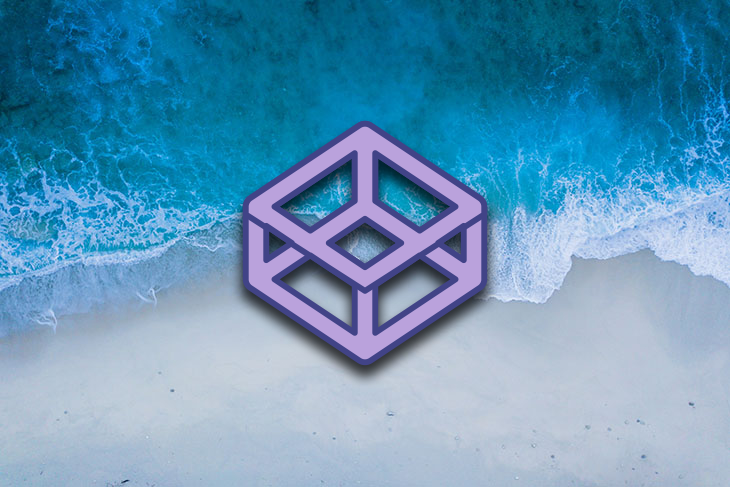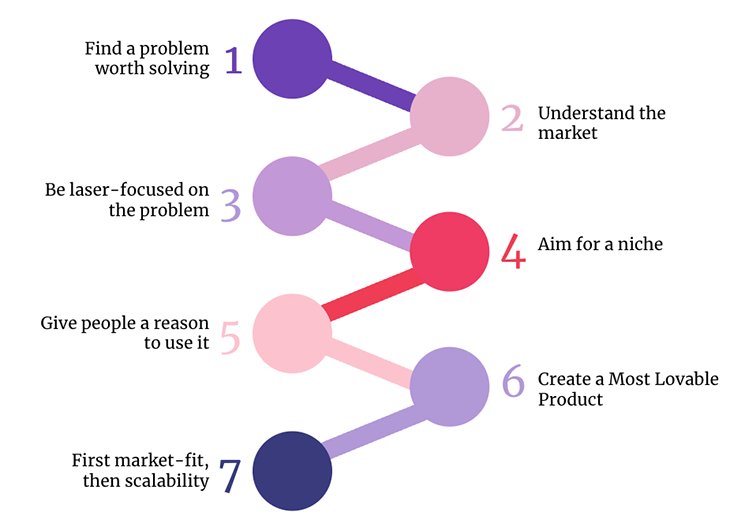Ideas are nothing without outstanding execution. Anyone can come up an idea, but transforming it into a product people care about is an entirely different beast.

In this article, I’ll share the seven stages of the new product development process. By “new product development,” I mean the process of taking a brand new product from idea to market.

Not all problems deserve your attention. You need to invest time in identifying the ones that will help you create value for customers and businesses. Yet, finding them is anything but trivial.
Problems are all over the place. You just need to observe what happens around you. For example, Reed Hastings, co-founder of Netflix, paid a late movie rent fee, realized the experience sucked, and decided to improve it.
I’d say that you should initially search for three aspects:
Once you identify a problem that customers care about, you can solve and create business value. It sounds like an idea worth pursuing, but don’t get too excited about it. Before going all in, you must learn other aspects of this problem space.
It’s easy to get super excited about your idea and jump into a minimum viable product definition. Not that fast, my friend.
First, you must understand how people solve that problem and if they really care about it. I call this step market understanding.
Here’s what you should do:
An essential hint: never ask customers if they’d use a product you’re thinking about creating. People are gentle — they will say yes, but that means nothing.
As you build a better market understanding, it’s time to pick a laser-focused problem you want to solve. This part is vital for your success. I imagine your idea might be broad. You must narrow it down as much as possible.
Maybe you disagree with me, but that’s ok. Let me give you some real-world examples:
Focus is critical to your success. The importance of starting small is the speed you learn. Without that, you’ll stretch yourself too thin.
Combining to start small, you must narrow down your audience as well because the first goal is learning and not scalability. When you start big, you will have tremendous exposure and end up dealing with too many problems, limiting your learning capacity.
You don’t want media attention in the beginning. You want to ensure you have a laser-focused problem with a niche audience.
For example, Facebook wasn’t an open social network from day one. It was a social network for Harvard students. Within that, Mark Zuckerberg and the company could accelerate learning and continuously improve the product for the small audience.
At this step, you should know which problem you’re solving for whom and how that creates value for the business and customers. The question now is: how do you get people to use your product?
To answer this question, you need to understand your audience. Your creativity will play a critical role in need. Here are some key aspects to explore:
The market is flooded with products and services. Your value proposition won’t be enough to get people to use your product. You need to give them advantages to start using something in the early stages.
The secret is identifying the early adopters because they are open to broken experiences in exchange for being the first to use something new.
First, create a product that’s lovable for a smaller audience, then you can think about scalability. I’ve seen too many products failing because they tried to scale too fast.
I understand that investors pressure founders to scale and bring results. That will happen only if you do it correctly.
The longer you keep your product with a smaller audience, the more lovable you can make it.
A common mistake is defining the MVP and doing a complete implementation. This will lead to waste because most of your ideas will fail.
Here’s how you make a most lovable product:
Once you have a most lovable product for a niche audience, it’s time to scale up gradually. You’ll still face a chance that your product doesn’t work for a bigger audience, and you want to test that.
Coming back to Facebook, they started with Harvard and then extended to more colleges. As that proved to work well, they gradually opened a social network. The idea is for you to have a similar approach, first prove a market fit with your product, then scale.
Once you understand you have a market fit, you’ll probably need to work on your scalability. This step is essential to scale up.
A product that supports 50 users differs from one that supports 5,000.
Hopefully, once you reach this level, you’ll have a value-driven mindset. A product is never final. You always learn something from your customers and have opportunities to make it better.
The seven steps mentioned will help you bring your product to market, but expanding it will require continuous learning and adaptation. Never settle. Keep improving your value proposition.
It’s hard to start a new product. Failure knocks on your door several times before you can succeed. A value-driven mindset combined with product thinking will increase the odds of thriving.
Once you find a problem worth solving, do your best to solve it well and create an outstanding experience. People will use your product when you help them get their job done well.
Featured image source: IconScout

LogRocket identifies friction points in the user experience so you can make informed decisions about product and design changes that must happen to hit your goals.
With LogRocket, you can understand the scope of the issues affecting your product and prioritize the changes that need to be made. LogRocket simplifies workflows by allowing Engineering, Product, UX, and Design teams to work from the same data as you, eliminating any confusion about what needs to be done.
Get your teams on the same page — try LogRocket today.

Most teams fail at autonomy. Learn how clear rules help product teams move faster without micromanagement.

A practical framework for PMs to use AI in ideation without sacrificing judgment, strategy, or decision quality.

A practical five minute revenue estimation method to help product managers compare ideas, drop low impact features, and prioritize smarter.

A practical guide for PMs who want to stop being bottlenecks, delegate smarter, and lead teams effectively with a clear ownership framework.